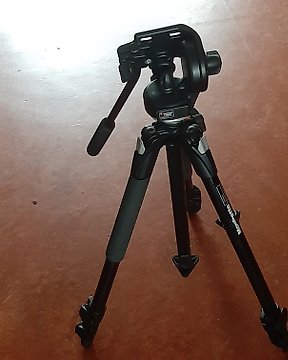
Manfrotto 190XWNB / 128 RC
No. 17182927

No. 17182927

With lead of origin and certificate of purchase.
The Juwella is a folding camera made by Balda in the 1930s. It makes 6×9 cm images (and some cameras can also be masked for 4.5x6 cm pictures; this was an optional feature) on 120 roll film. McKeown lists four generations of the camera, dated to 1933, 1936, 1938 and 1939.[1] The first of these was at first named the Jubella for a short period, to celebrate Balda's 25th year (as the Jubilette was named for the company's 30th year in 1938); Jubellas are identified by the name impressed in the leatherette, and the lens has the same name.[1]
The camera is self-erecting, with a button to release the front next to the film winding knob or key.
The lens is a fixed 10.5 cm f/6.3 or f/4.5 Juwella Anastigmat (or Jubella in the earliest cameras), with front-element focusing to about two metres. Many examples have an everset shutter with speeds 1/25 - 1/100 second, plus 'B' and 'T'; this may be Balda's own, or a Pronto, with the same speeds but also with a self-timer. McKeown states that better-specified shutters including Compur and Prontor II were available on at least the 1938 camera. A body-mounted shutter release button was an optional feature of the 1939 model,[1]; however, some cameras from 1936 onwards have a curious clasp mounted on the front, just above the front door, which holds the end of a cable release (thus providing a body-mounted shutter release).
In most examples, the main viewfinder is a double frame type, with extra frames for the half-frame format on those cameras adapted for it. McKeown states that a reverse-Galilean finder was an option from 1938.[1] There is also a Brilliant finder mounted on the lens standard, which swivels for horizontal and vertical use.
How to buy on Catawiki
1. Discover something special
2. Place the top bid
3. Make a secure payment